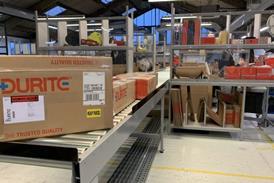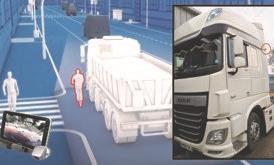
In 50 years Salford Van Hire (SVH) has established itself as one of the most influential players in the CV market. The Manchester-based business was created by Italian-born Raffaello Bacci (pictured, centre) in the 1960s when Mr B, as he is known to his 200 employees, spotted an opportunity to provide business transport to the wider market while working at his grandfather’s lampshade- making firm.
He bought a van, rented it to other businesses when it was not being used by his family, and eventually launched SVH in 1965.
Today, the £55m turnover-a-year company operates just shy of 7,000 CVs at peak times – comprising 50% HGVs, 30% vans and 20% trailers – from two depots in Salford, Manchester and a third in Leeds.
SVH is also looking for a new 8-acre site in the local area for a specialist HGV depot to house all vehicles over 7.5 tonnes.
Despite its scale, the business is still a family affair: Bacci’s son Alessandro (pictured, left) is MD and his daughter Graziella is head of HR and vehicle finance. Nic Evers (pictured, right), who started at SVH nearly 40 years ago on the rentals desk, is operations director.
A tight-knit team
“We are a tight-knit team and every member of staff plays an integral part in the business. When we recruit we don’t just look at qualifications, important as they are, but also at how the individual will fit into the company and work and interact with new colleagues,” says Graziella.
“This is one of the beautiful things about SVH, we are still able to make decisions very quickly,” agrees Raffaello. “Someone comes in and wants 100 vehicles for three years; we say OK. No need for big board meetings.”
Flexible contracts at a competitive price are a vital part of the company’s success in the current economic climate, particularly among 3PLs, with a marked shift away from traditional contract hire terms.
Evers says: “A lot of the contract hire long-term deals have gone because 3PLs are competing with each other all the time. We see transport managers at one company and three years later, they’ve moved on, and he’s lost that contract, but he’ll fight for it back again. That’s what’s kept distribution costs and rental costs down. They need to be flexible because they don’t know how long they will keep their own contract with a client.”
Alessandro says that only that morning the company created a new deal for a customer who had originally opted for a six-month term, but found the vehicle it had chosen was too large for the volumes coming through the contract and wanted to use an existing 18-tonner instead. “It was a vehicle off the spot-hire fleet, so we said ‘return it to us’. Companies are looking for flexibility.”
Changing trends
He adds that when the contract hire division was launched in the mid-80s, it was a very different marketplace, with companies more stable and willing to commit to longer hire terms. Since then, a trend for company mergers and the effect of two recessions have left operators unwilling to commit to hire contracts unless they are sure it will work for them: “ with the competition between themselves and within the rental market, spot hire is often now cheaper for this reason than a contract hire rate might be.”
There is still a strong demand for traditional contract hire within specialist companies opting for refrigerated trailers, for example.
With flexibility a key driver for SVH, ensuring the right vehicles are available to fulfil customer requirements can be a challenge, but one the company says it has successfully navigated. “Mr B is very astute in the way he works it out,” says Evers. “I say he gambles at it.” An educated gamble, agrees Alessandro.
By June each year, SVH has taken all orders from 1 October through to January because it knows its customers’ requirements and is committed to ensure it can fulfil their needs every year. “We work to ensure we have the right number of new vehicles coming in every year. We never turn people down if they need vehicles,” says Raffaello.
The company keeps vehicles for about three years, with new units joining the fleet each September and existing ones remaining in operation until the end of the peak period in January. “This year 250 tractor units came in on 1 September, on top of the 350 we have. This is how we build up for peak,” says Raffaello.
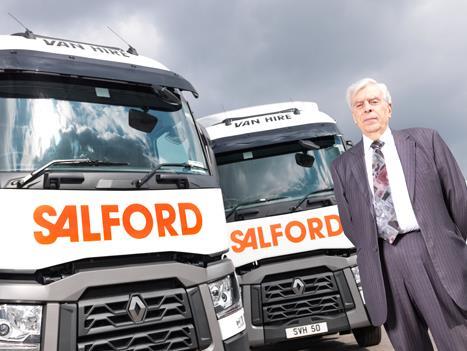
Forward planning can sometimes lead to the unexpected, as was the case three years ago following the government’s decision to place Royal Mail into private ownership.
SVH had already stocked up in advance to fulfil Royal Mail’s annual order for tractor units, which had risen over the years to about 450. However, Royal Mail received an injection of cash before privatisation, which led to it buying in its own units and reducing its requirement from SVH to less than half what the company had predicted.
“So we’ve got 200 tractors we don’t know what to do with. So what did that do?” asks Raffaello. “The sales guys were thrilled. Instead of our piece of cake being sliced into four or five, it was split between eight companies. Those companies are now still using us. This is all because of a gamble that paid off.”
Speedy service
The company offers an availability promise to customers, with the CV division open 24 hours a day to accommodate last-minute requests for vehicles. Alessandro says: “People used to know far more in advance what vehicles they needed. But now, the distribution managers often don’t know what volumes they are going to move until the last minute. In the past, they could say one week ahead ‘we need 10 on Thursday and 20 on Friday’. But now, it’s so much last minute with JIT deliveries, we’ve had to adjust accordingly and make sure we have drivers and vehicles available to get them where they are needed.”
Evers agrees: “It’s all about the reaction time. For example, we hope the sun shines, as volumes shoot up then. If it’s a good weekend, people stock up on everything and retailers might not have enough trucks to meet demand.”
The company’s main customers on the HGV side are predominantly supermarkets and high street retailers. The type of vehicles used in those operations are easy to swap very quickly, after being checked and cleaned, and back on the road within 24 hours. “Tractor units are where we do very well,” says Evers. “We’ve found our niche.”
Euro-6
SVH moved away from stocking large numbers of construction and engineering vehicles in its spot hire fleet because their specialist nature meant they were not always suitable for the next customer and there would be long periods of downtime between rentals.
The introduction of Euro-6 vehicles to SVH’s fleet has been gradual, with customers’ initial resistance to the price premium slowly changing as evidence shows their fuel-saving potential. Alessandro says:
“Euro-6 is very interesting because of the timing of when it came out. People didn’t want to accept that there was a big difference in price; industry was coming out of recession; and the cap-ex wasn’t there. But as confidence is growing, people understand that by spending more on them they will get a better return on fuel. We’ve had to take a long-term view on Euro-6. Price-wise, we’ve had to sit with it for a year or so, but people are now coming round to it.”
Last year SVH placed several Euro-6 trucks out at the same price as Euro-5 to gather evidence and to prove to customers that the Euro-6 mpg was better. SVH now owns 300 Euro-6 trucks (around 15%-20% of the total fleet). It took advantage of derogation rules last year to bring in an additional 500 Euro-5s before the cut-off. “With derogation, everybody stocked up; we did too,” says Evers.
SVH believes it is perfectly positioned to understand vehicle trends within the industry.
It is seeing a marked shift towards the 3-5-tonne and 12-tonne markets, as the new driving licence rules requiring testing for those previously holding ‘grandfather rights’ to drive 7.5-tonners has started to take effect.
Evers says: “Law changes come along and you see a shift. The change to the licence on 7.5-tonners has made a massive difference. Our tail-lift 3.5-tonne Luton fleet has trebled. I couldn’t believe it. I said ‘why are we buying all of them?’ From around June last year, we must have bought about 145 Lutons. I panicked because I didn’t think they would all be utilised, but it’s now at 80%.”
However, 7.5-tonners have remained popular, at around an 80%-85% utilisation rate, but numbers have remained static on the fleet.
12-tonne boost
The company also took a chance on seeing a boost to its 12-tonne market, particularly from its supermarket customers’ move to more convenience stores on the high street, with limited loading bay capacity in busy, urban locations. SVH found customers needed something bigger than a 7.5-tonner, but smaller than an 18-tonner.
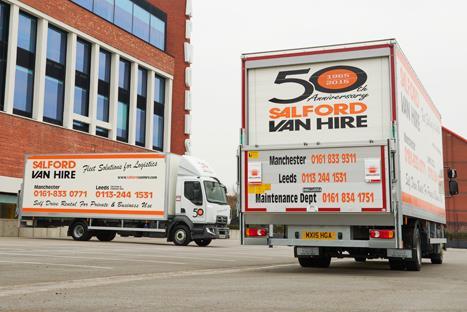
“It is a gamble,” says Raffaello. “On the continent they use 8.5-tonners, 10-tonners, 12-tonners. Here, it was either 7.5-tonners or 18-tonners, there wasn’t a market for anything else.”
Alessandro adds: “We’ve thought we’d try it and put some on the fleet and they’ve proved to be really popular. We’ve 25 on the fleet at the moment – 15 Dafs and 10 Renaults. The Dafs came in October and we haven’t seen them since. It’s something we will look to grow over the next few years as the 7.5-tonners die off.“We’ve also had trials with a couple of supermarkets recently where they’ve never used Lutons before, so we’ve said try one on spot hire. There was one where they tried a Luton and an 18-tonner, and the Luton worked out better.”
Improved vehicle technology and components, longer warranties and the benefits of bulk-buying power from manufacturers have been passed on to SVH customers through steady rates, which have not increased significantly over the years.
Says Alessandro: “For example lubricants, although it’s now more expensive to put them in initially, you don’t need to change them until the engine management system tells you to, which can be as long as 35,000 to 60,000 miles depending on how the tractor unit is running. So we pay more for the trucks, but they cost us less to service, so that’s why we end up holding the prices lower.”
When it comes to retiring its vehicles, SVH always deals with second-hand traders and occasionally directly with the manufacturers. However, it steers clear of the auction route.
“We use about five or six main used dealers,” says Raffaello. “We are loyal to them and they are loyal to us. They need good value for money so they can pass it on. If they cannot sell it, they won’t come back.”
Alessandro says: “We structure it as well so we don’t flood the market. If we’ve got 150 Dafs to dispose of, we’re not going to say, right, there’s 150. We talk to the traders and put through 10 to 15 at a time and then they come back for some more. This keeps the RVs as high as possible. We’ve learnt this over the years.”
SVH has found this enables the company to achieve between £2,000 and £3,000 more than returning to the manufacturers for a buy-back deal. “We have to be profitable. We’ve only had two losses [during both recessions] in 50 years,” says Raffaello.

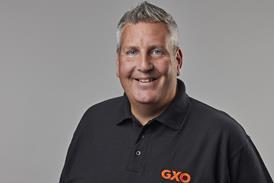

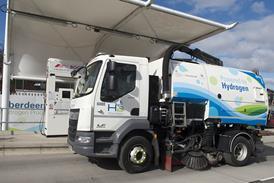


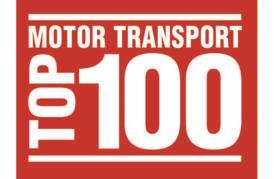
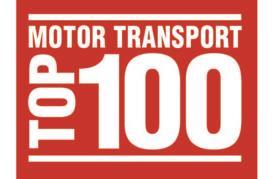
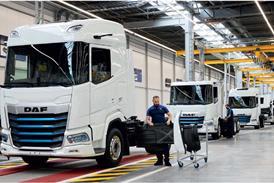
![Mercedes-Benz_eActros_600_(1)[1]](jpg/17820_mercedesbenz_eactros_600_11_978080.jpg)

